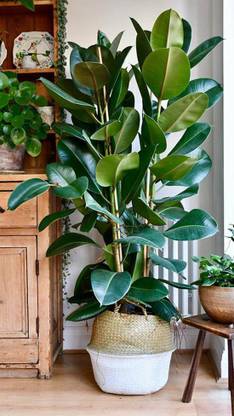The best climate for rubber tree cultivation is tropical. It originated in the Amazon basin and has been successfully introduced to other regions. Rubber farming is a lucrative business. Although it requires a lot of work, this type of agriculture can provide a high income.
Hevea brasiliensis, also known as Para Rubber Tree, is also known as a rubber tree. It is a perennial tree that can reach a height between 25 and 30 meters. The life expectancy of a rubber tree exceeds 100 years. You can easily buy a rubber tree via https://www.plantvine.com/product/ficus-elastica-burgundy/.

Image Source: Google
Rubber trees transform inorganic nutrients from soil and carbon dioxide from the atmosphere into organic carbohydrates, which then turn into rubber latex. Through millions of tubes or capillary vessels located in the soft outer bark, the latter flows up the tree.
The tree's leaves, which are responsible for carbohydrate formation, fall off at least once per year. New leaves then form. Wintering lasts sixteen weeks and has a significant impact on the tree's metabolism and latex composition. This, along with other factors such as climate, causes marked seasonal variations in natural-rubber production in the producing countries.
The trees are removed when latex production becomes prohibitive. Rubber plantations can be a viable source of rubber and timber, which contributes positively to the environment.
Wood is vulnerable to insects and fungi. To increase the wood's durability, chemical preservation is done. Rubberwood vessels are easy to treat with preservatives.